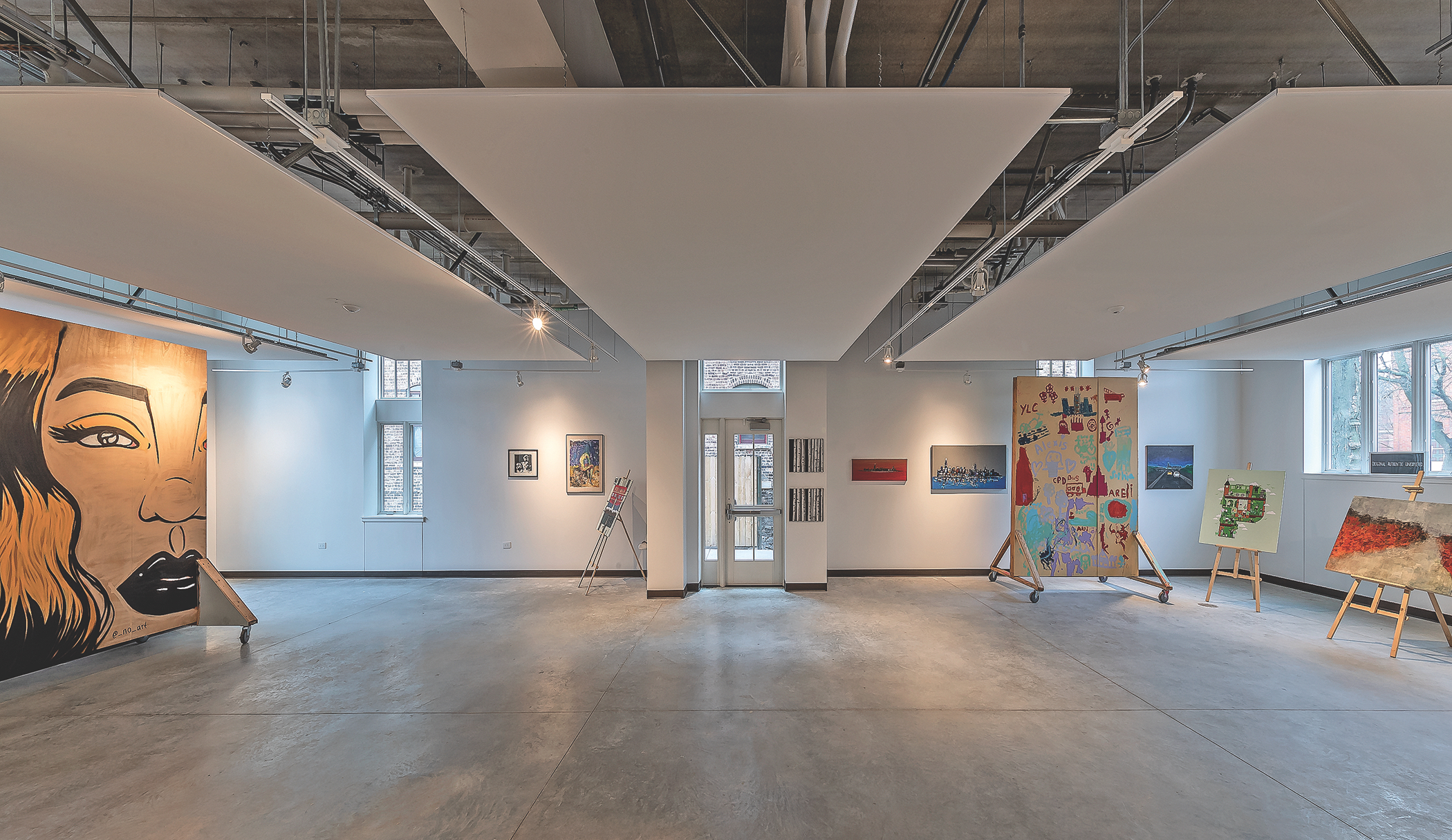The statistics are grim. According to Harvard’s Joint Center for Housing Studies, nearly half of all renter households (20.4 million) spent more than 30 percent of income on housing in 2019; 17.6 million households spent more than 50 percent. The National Low Income Housing Coalition reported that there were only 37 affordable and available homes for every 100 extremely low-income renter households nationwide in 2019.
Then there are the homeless—580,466 by the U.S. Department of Housing & Urban Development’s last count (January 2020); of these, 37,252 were veterans. HUD estimated that 1.4 million people slept in homeless shelters at some point in 2018. During the 2016-17 school year, 1.35 million children experienced homelessness at some point, reported the National Center for Education Statistics.
Despite the grim statistics, energetic developers, nonprofit groups, and their design and construction teams are finding ways to build housing that is not only affordable, but aesthetically pleasing and environmental responsible as well. Let’s take a look at 13 of them.
1. CAPITOL VISTA | Washington, D.C.

Located eight blocks north of the U.S. Capitol, Capitol Vista provides 104 studio and one- and two-bedroom rentals ($1,131 to $1,354/month): 21 at 30% AMI, 83 at 50% AMI. The $50 million enterprise may be unique in having Black owners (Dantes Partners), a Black property manager (Faria Management), and a Black interior designer (Determined by Design, founded by Kia Weatherspoon, NCIDQ, ASID, a Building Design+Construction 2020 “40 under 40” honoree). Grimm + Parker (architect) headed the team: SK+A Structural Engineers (SE, CE); Wiles Mensch Corp. (CE, landscape design); Century Engineer (MEP); MaGrann Associates (sustainability); and Hamel Builders (GC).
2. HOPEWORKS STATION NORTH | Everett, Wash.
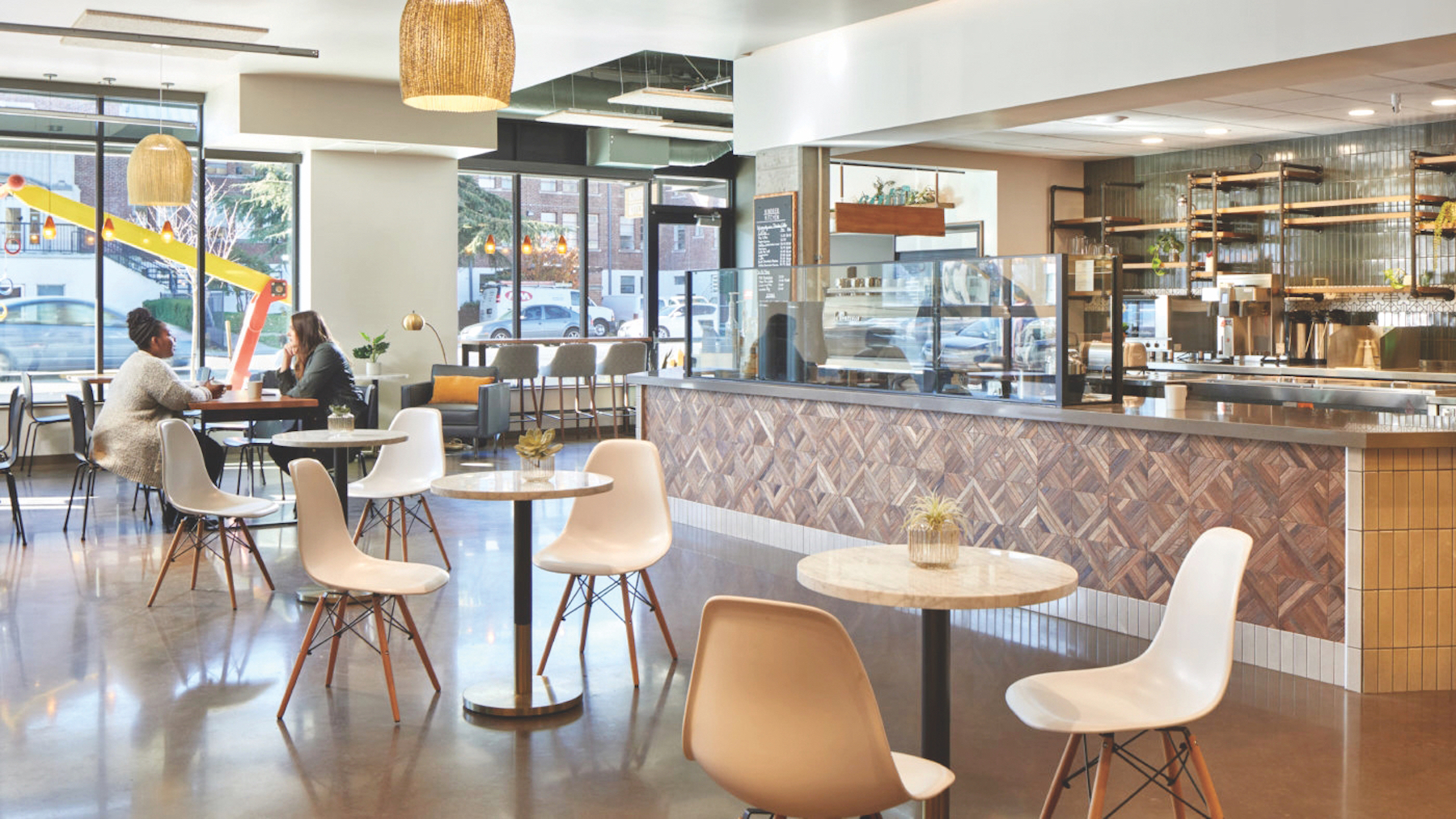
This four-story, net-zero-energy, LEED for Homes Platinum apartment complex has been selected for the Living Future Challenge affordable housing pilot and participated in the LEED Multifamily Midrise pilot to demonstrate compliance with Washington State’s Evergreen Sustainable Development Standard. Its 532 solar panels generate 198,000 kWh/year. GGLO and Dykeman Architects (designers) steered the $17.7 million project for HopeWorks Social Enterprises, with Beacon Development Group (development consultant), O’Brien360 (sustainability consultant), and Kirtley-Cole Associates (GC). The 65 studio and one- and two-bedroom units house homeless youth and veterans earning 30-50% AMI.
3. THE AYA | Washington, D.C.
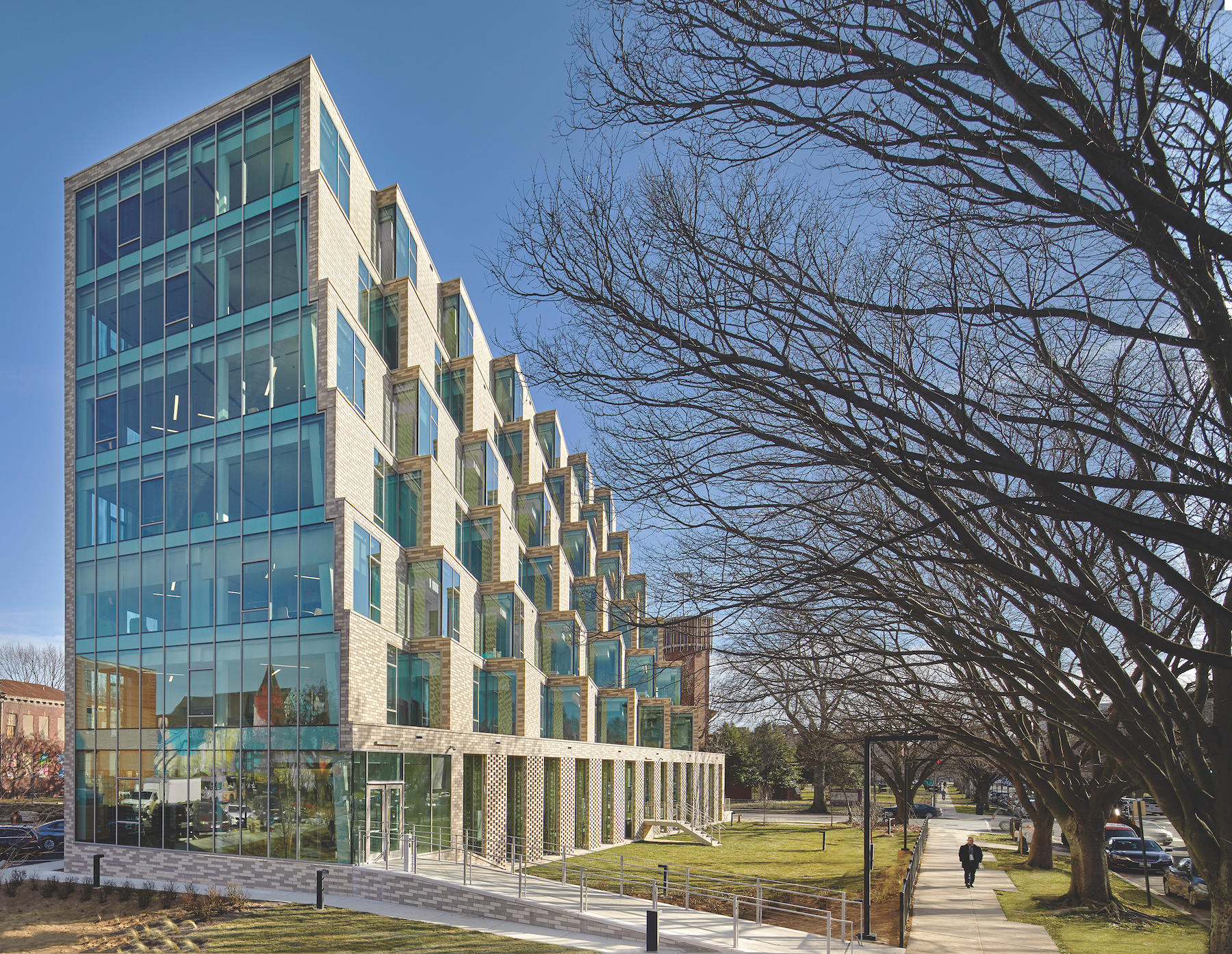
The Aya offers emergency housing for up to 50 families—largely mothers with young children—in Southwest Washington. Each color-coded floor has 7-10 units; adjoining rooms can be linked via lockable doors to accommodate families up to 12. The joint venture of LEO A DALY and Studio Twenty Seven Architecture designed the $21 million center for the D.C. Department of General Services. Silman Associates (SE), A. Morton Thomas (CE), Setty & Associates (MEP), and Blue Skye Construction (design-build contractor) contributed.
4. FOUR TEN LOFTS | Baltimore, Md.
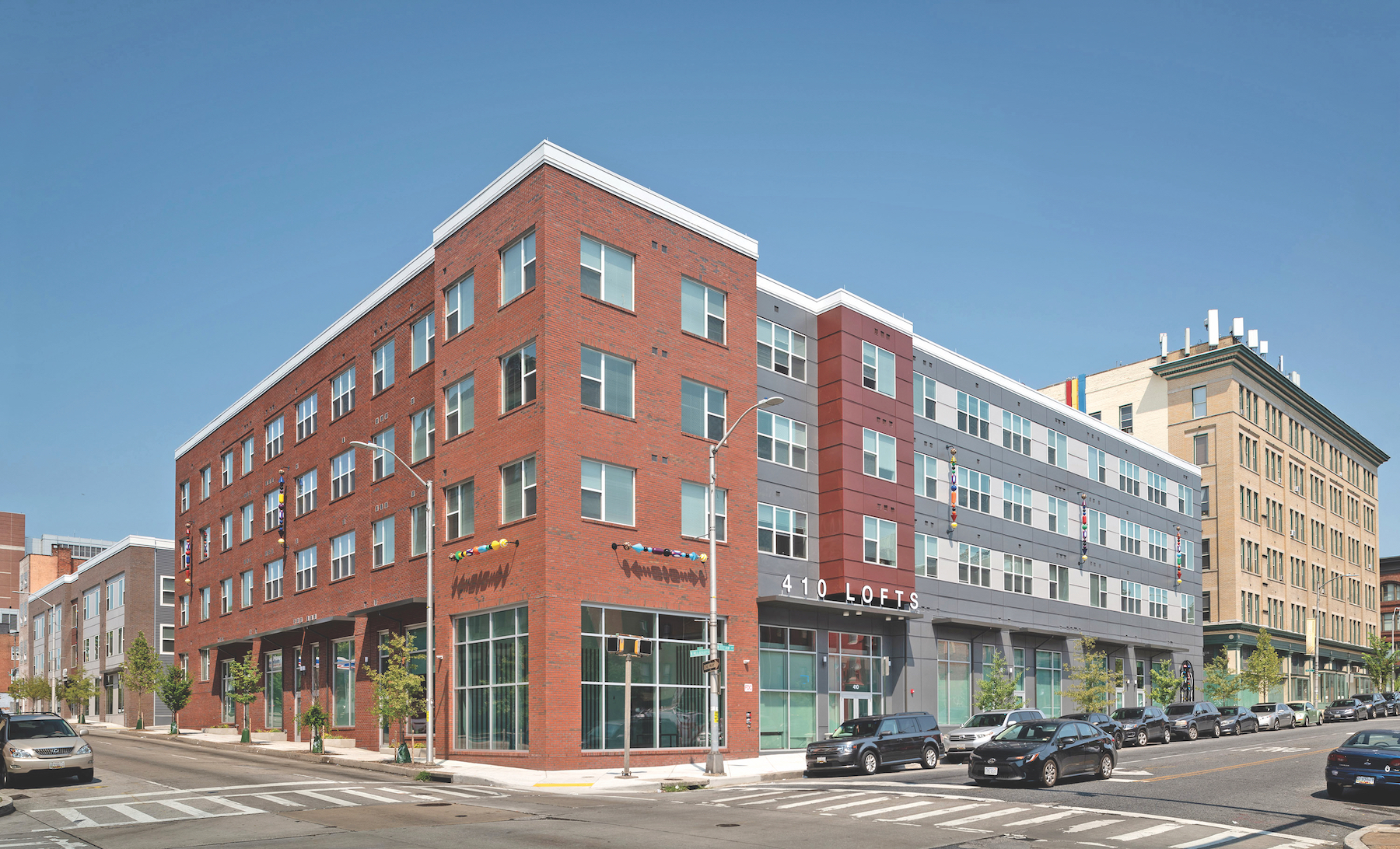
Designed for artists and the homeless, this $14.2 million complex, in the Bromo Tower arts and entertainment district, provides eight three-bedroom apartments in one building and 68 one- to three-bedroom units in a second structure. The latter building has a two-story gallery, sound rooms for musicians, an art workroom, and a spray booth. All rooms come fully furnished; United Way outfitted the apartments with bedding, towels, dishes, and small appliances. Energy Star Multifamily and National Green Building Standard certification were achieved.
5. LINEAGE | Alexandria, Va.
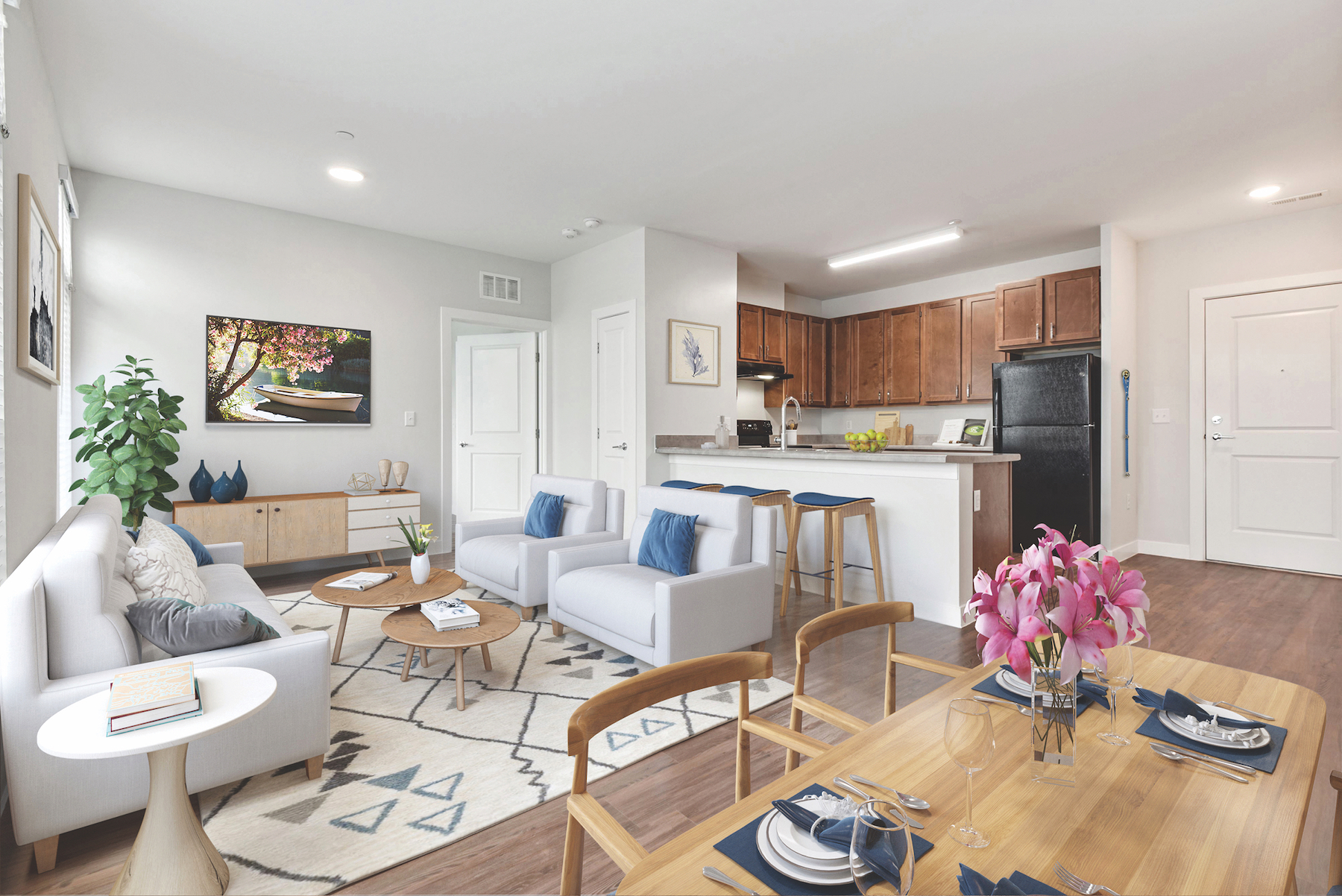
In 1942, the U.S. Housing Authority constructed 15 apartments for African-American war industry workers and their families in the historic Parker-Gray District of Alexandria, Va. The precast modernist units remained in use as public housing until 2018, when they were deemed beyond repair. The KTGY-led project team leveraged the FAR requirements to garner 52 units on the 0.71-acre site: 15 at 30% AMI, 11 at 50% AMI, and 26 at 60% AMI. Six units at the $12 million complex are fully accessible. Lineage earned EarthCraft Gold certification.
6. PULLMAN ARTSPACE LOFTS | Chicago, Ill.
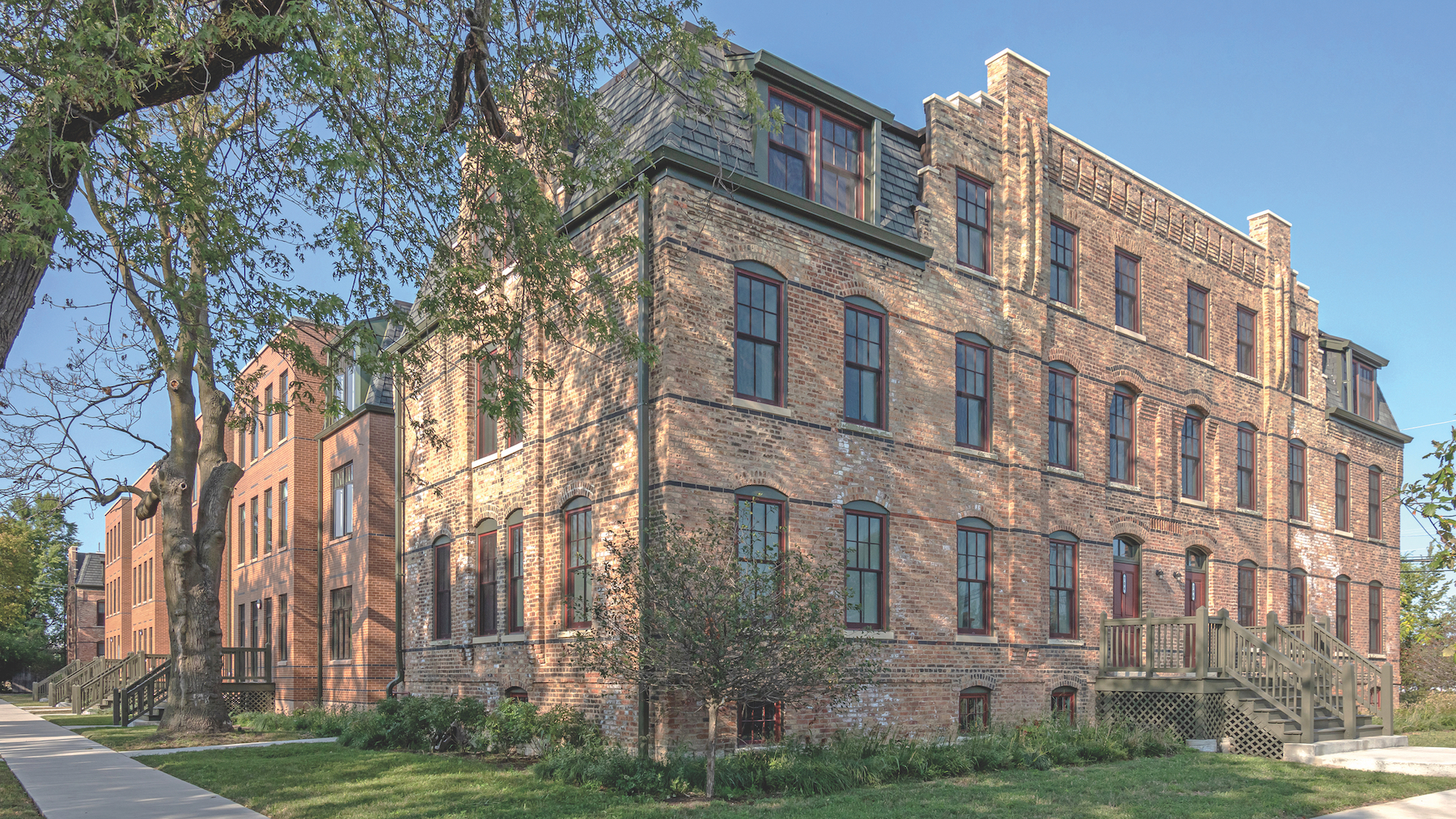
Two abandoned 19th-century landmark apartment buildings were renovated and a new building inserted between them to create 18 one-bedroom and 20 two-bedroom lofts for working artists (60% AMI) in Pullman, a planned community that was the home of the Pullman Car Company in the late 1800s; it was named a National Monument in 2015. Stantec (architect) captained the team of Pepper Construction (CM/GC) and Brown & Momen (CM) for owner/developer Pullman Artspace LLC and co-developers PullmanArts and Chicago Neighborhood Initiatives.
7. PATH METRO VILLAS | Los Angeles, Calif.
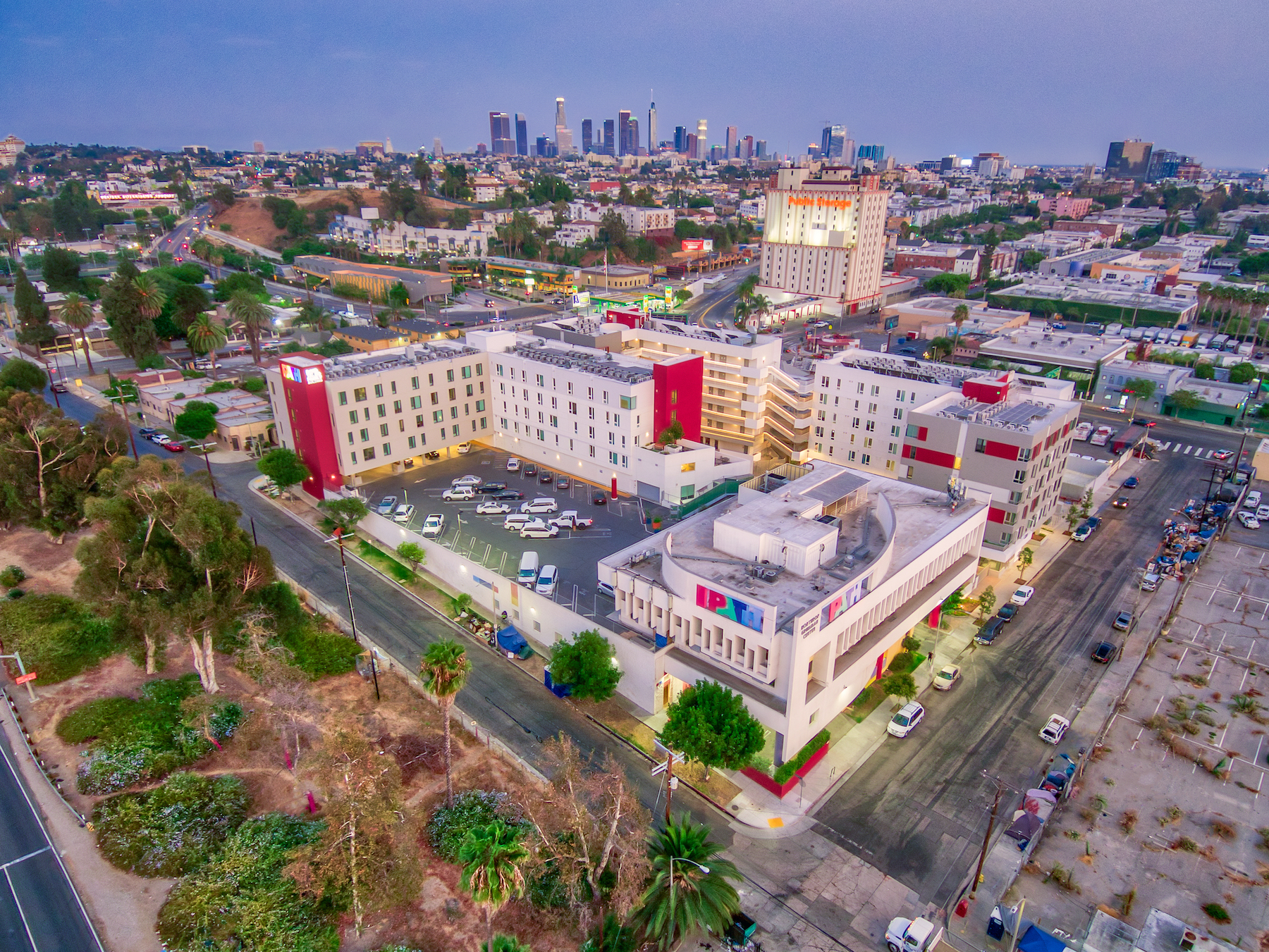
This two-phase enterprise provides 186 studios and one-bedroom units and supportive services for veterans, seniors, and the homeless in the Rampart Village section of Los Angeles. The developer, PATH Ventures, had to secure a zoning change from light industrial to residential. KFA Architecture (architect) worked with Englekirk Engineers (SE); KPFF Consulting Engineers (CE); ME Engineers (MEP); Irvine & Associates (land planner); Landscape Images (landscape architect, Phase 1); AHBE|MIG (landscape architect, Phase 2); and Walton Construction (GC).
8. VILLAS AT THE RIDGEWAY | Yonkers, N.Y.
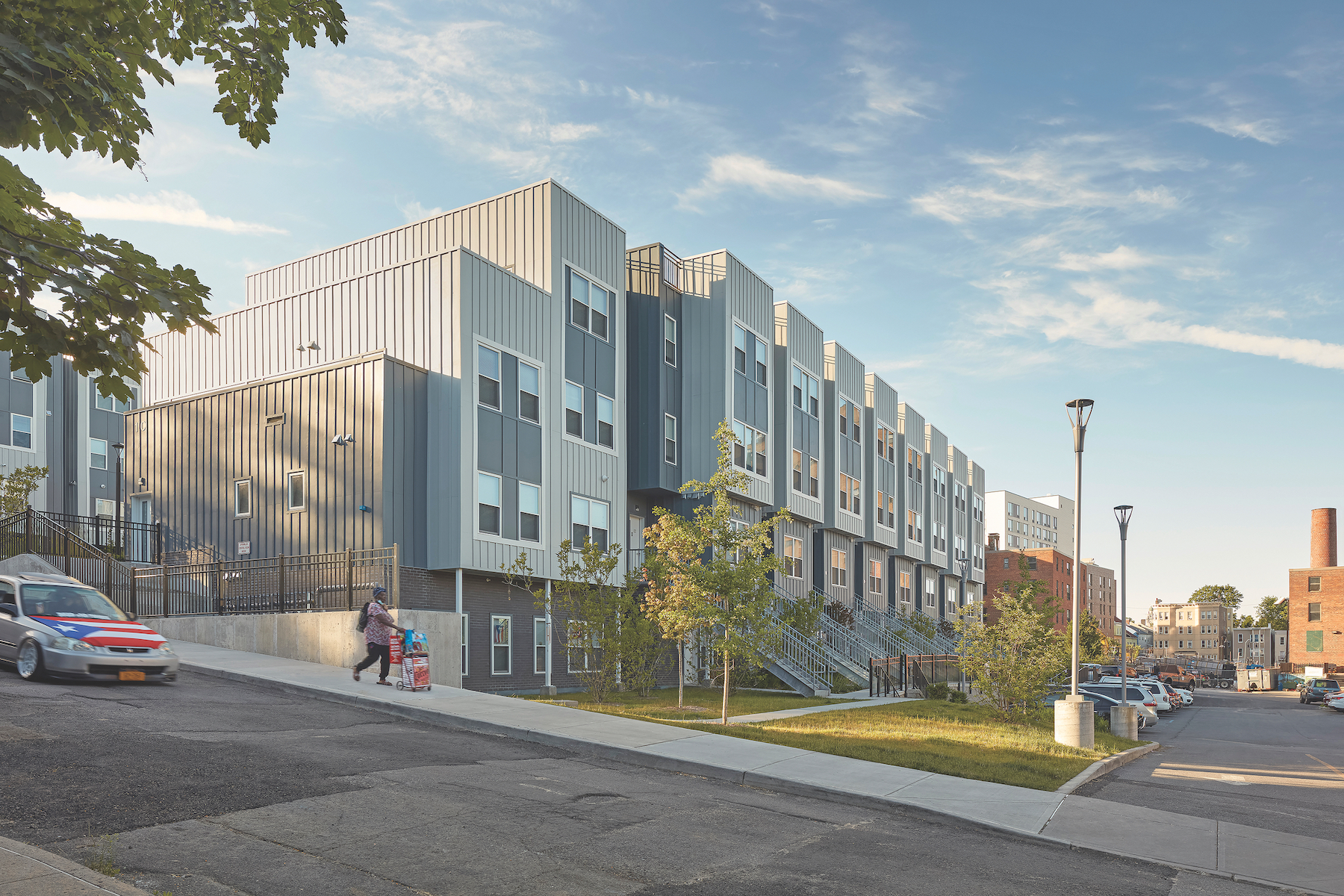
This redevelopment replaced three derelict public housing buildings with 70 two- to four-bedroom apartments at 30%, 50%, and 60% AMI, plus some market-rate units, using 40X16X10-foot modular units fabricated off site. Magnusson Architecture and Planning helmed the project for The Community Builders (developer), with LMW Engineering Group (SE), Philip Habib & Associates (CE), Johnson & Urban (MEP), Terrain-NYC (landscape architect), Steven Winter Associates (sustainability consultant), and JoDi Realty (builder). They also renovated a daycare center that serves the neighborhood.
9. PHOENIX ESTATES II (700 MANIDA STREET) | Bronx, N.Y.
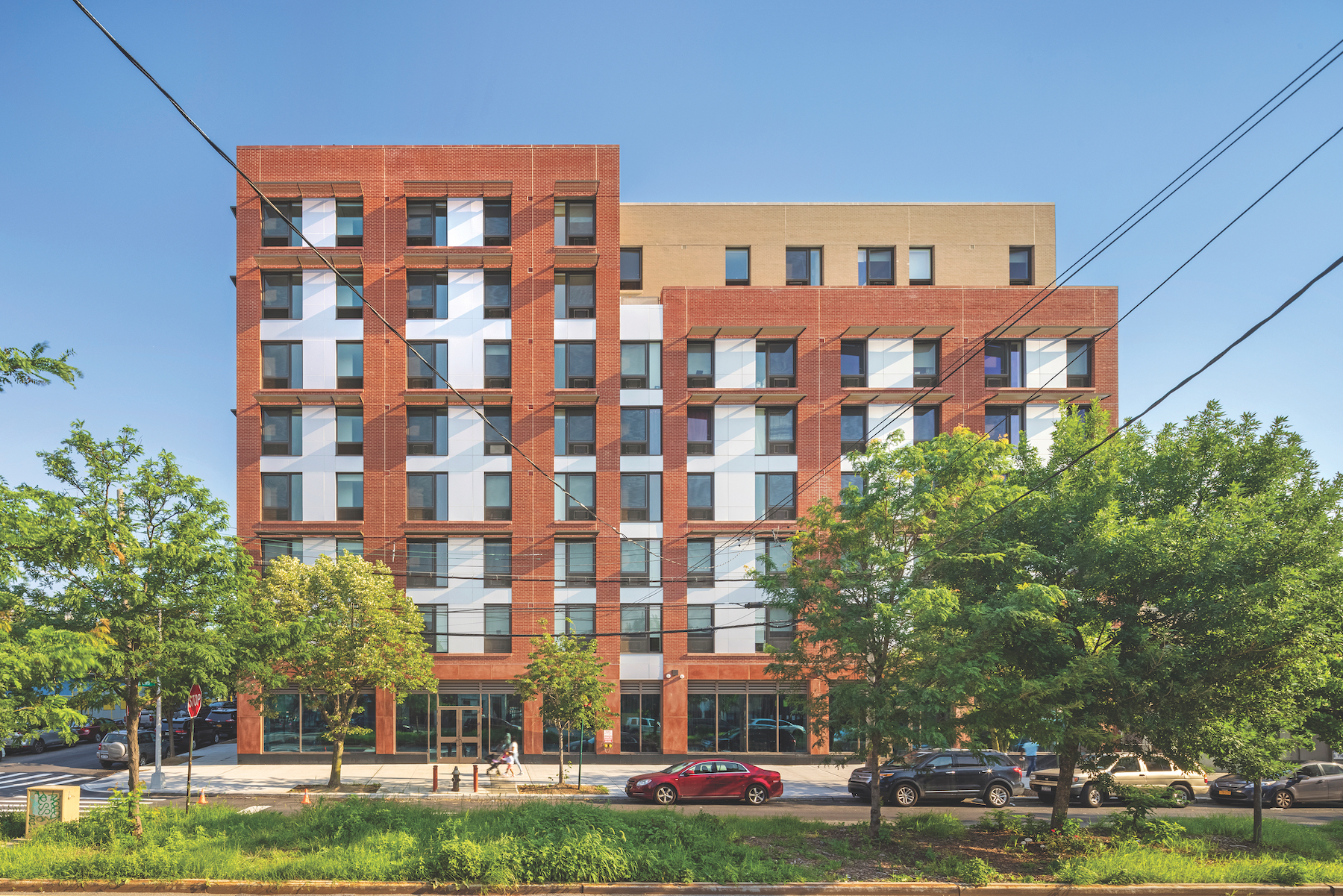
RKTB Architects took advantage of NYC’s 2016 Zoning for Quality and Affordability rules to gain 45% greater FAR for this 102,000-sf mix of 100% affordable senior (48) and family (60) apartments. The senior units are distributed throughout the six- to eight-story L-shaped complex. The $33 million transgenerational enterprise has a 7,100-sf yard and ground-floor space for two art galleries.
10. FROST TERRACE | Cambridge, Mass.
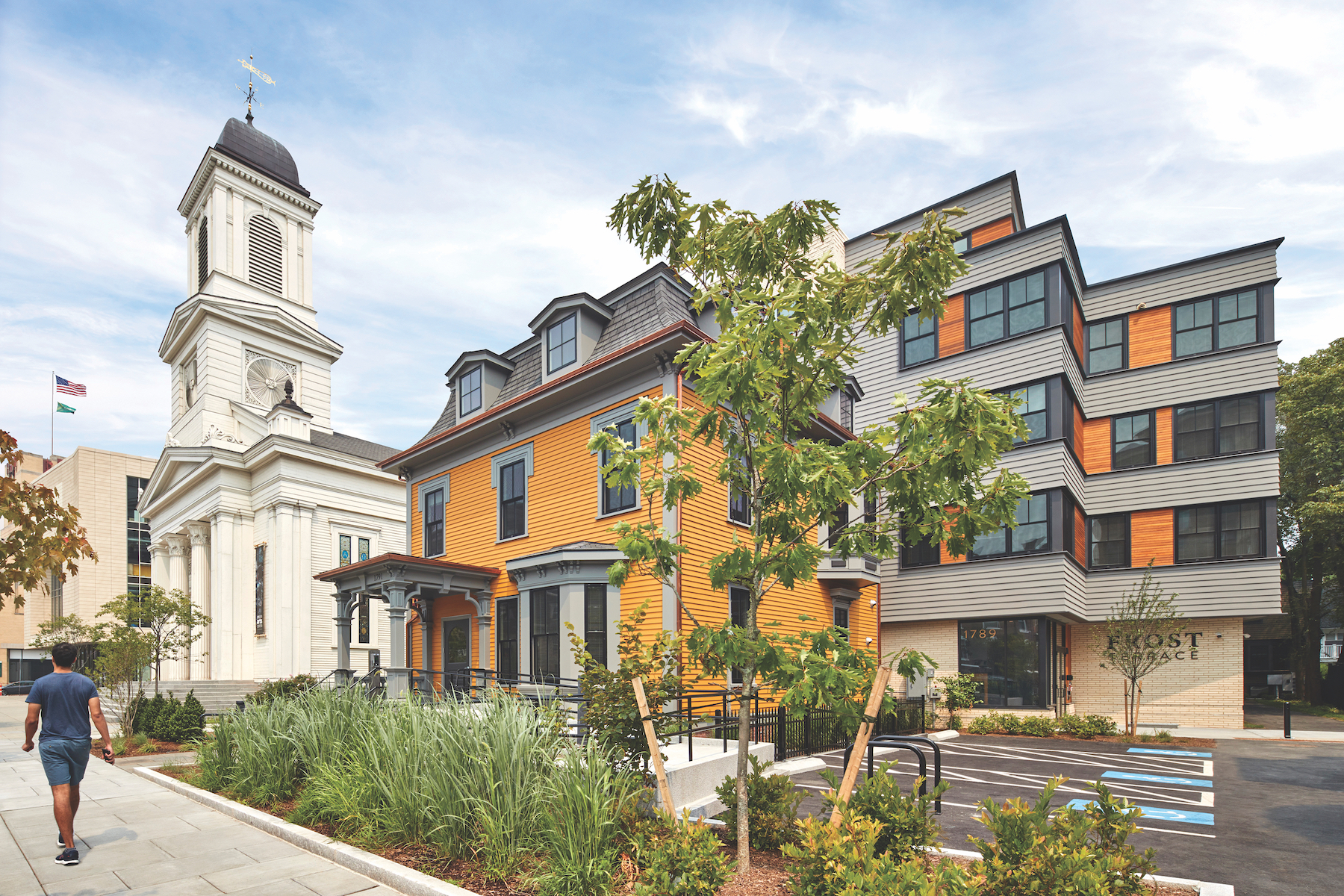
Bruner/Cott Architects inserted a three-story structure amid four restored single-family edifices to form a transit-friendly complex with 40 100% affordable (30-60% AMI) studio and one-, two-, and three-bedroom units. Eight of the apartments have been set aside for Section 8 vouchers. The developers, Capstone Communities and Hope Real Estate Enterprises, used the Commonwealth’s Chapter 40B speedy permit process to get all approvals in one step. They are targeting LEED Multifamily Midrise Gold.
11. WARLEY PARK | Sanford, Fla.

As Central Florida’s first permanent supportive housing community, Warley Park offers 81 one- and two-bedroom apartments for homeless individuals and families. On-site services (provided by Step Up on Second) include mental healthcare, job training, GED classes, and after-school programs. Wendover Housing Partners (developer) was assisted by Slocum Platt Architects and Roger B. Kennedy Construction.
12. WINTON GARDENS TOWERS | Rochester, N.Y.
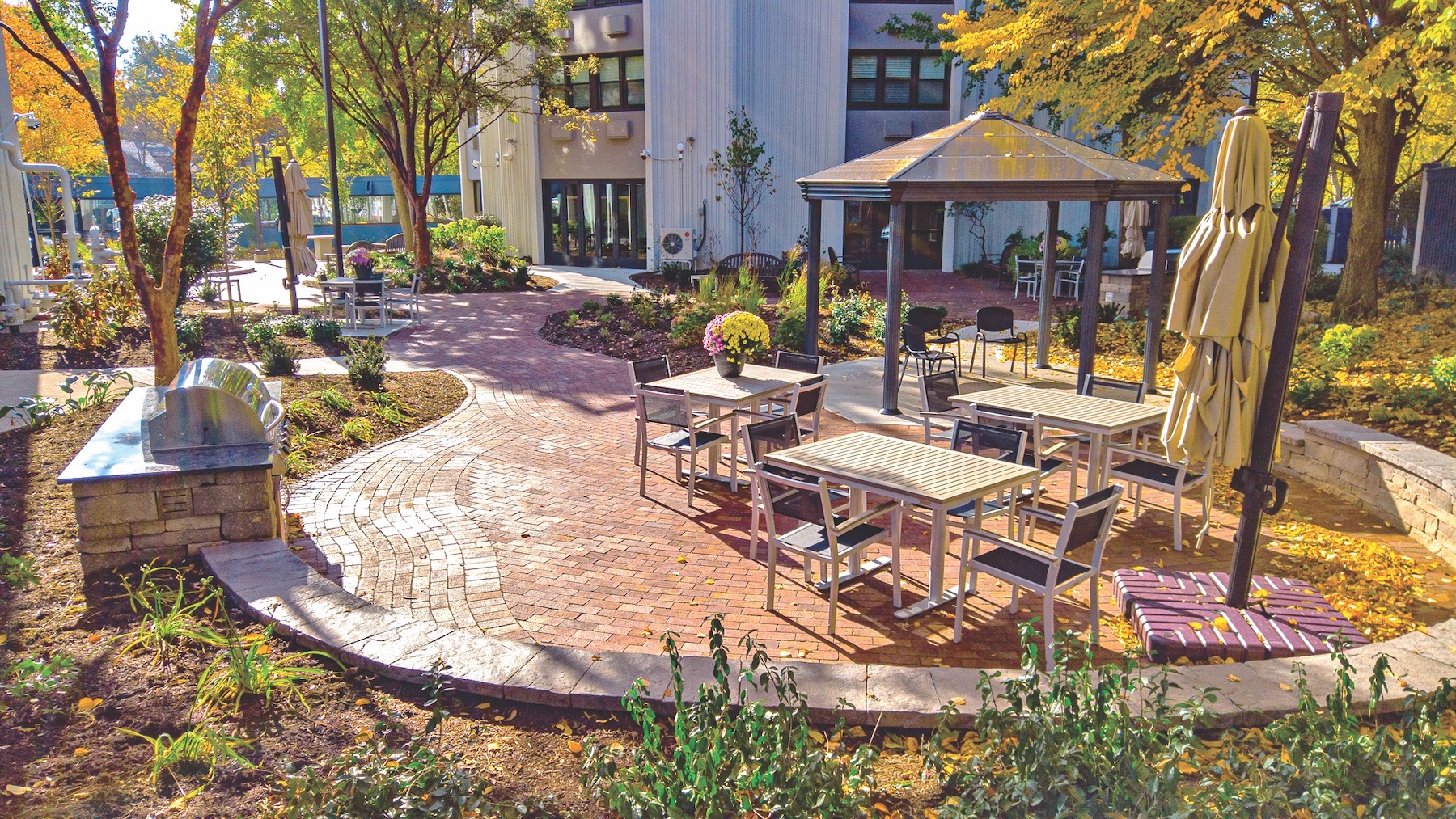
Originally built in 1973, these twin 11-story towers had deteriorated into a crime-ridden hot spot. Community Preservation Partners bought the property in 2018 and, with Rochester’s Cornerstone Group, invested $28.5 million in Energy Star appliances, LED lighting, energy-efficient PTACs, high-efficiency elevators, and security and accessibility upgrades. The 55+ community offers 200 units (425-525 sf) at 30% AMI, six at 60%. Ebesoldt Associates Architecture (designer) and Katerra (builder) performed the work.
13. FAIR OAKS COMMONS | Redwood City, Calif.
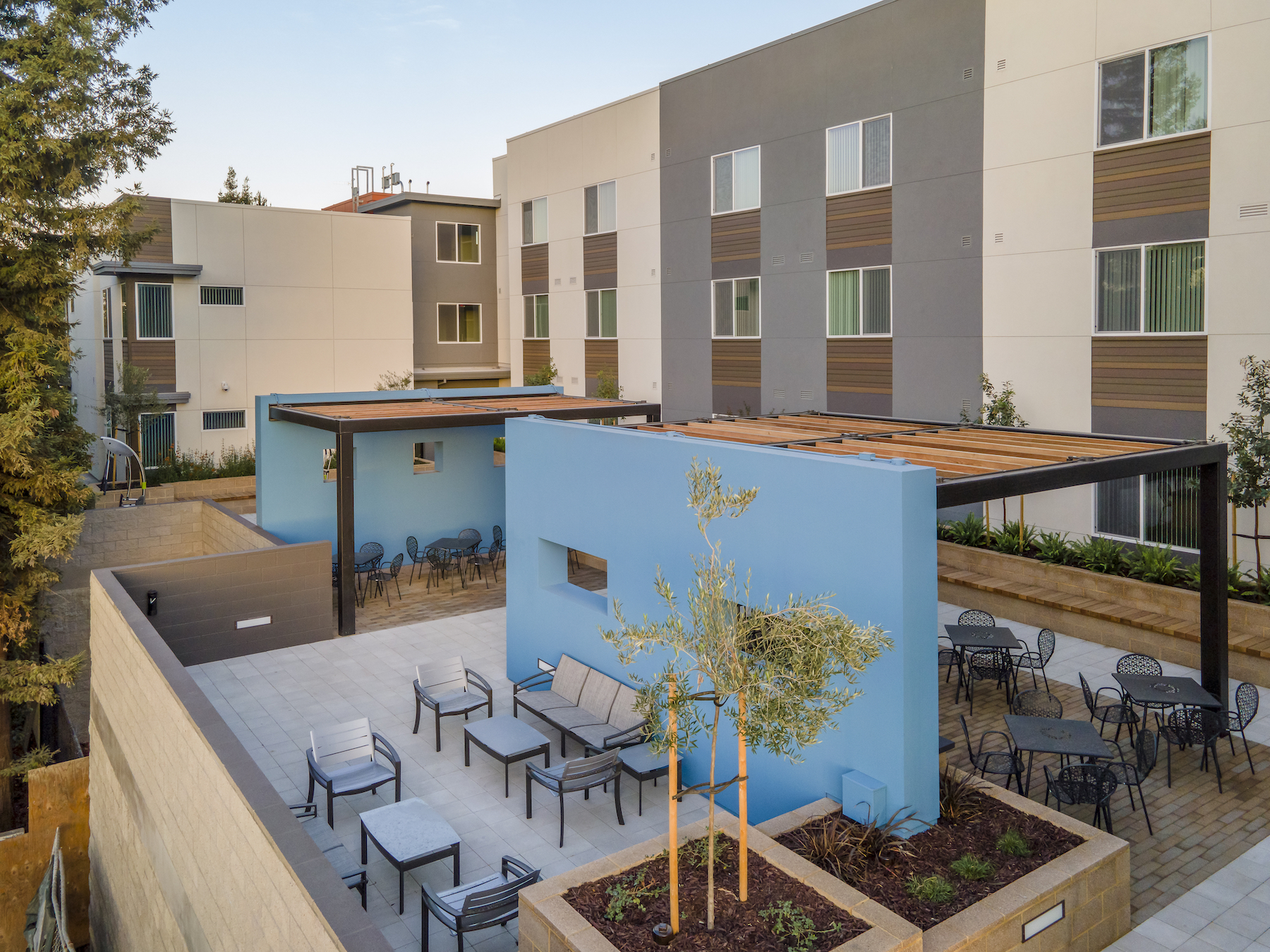
This $42 million complex was the first in San Mateo County to get one-stop approval under California’s SB 35. Its 67 living units (59 furnished) serve families, veterans, and the homeless (30-70% AMI). On-site service agency John Stewart Company provides job readiness programs, financial planning courses, and case management. Dahlin Group (architect) piloted the team: LUK and Associates (CE), Emerald City Engineers (MEP), The Guzzardo Partnership (landscape architect), and L&D Construction (GC).
Related Stories
MFPRO+ News | Jun 3, 2024
Seattle mayor wants to scale back energy code to spur more housing construction
Seattle’s mayor recently proposed that the city scale back a scheduled revamping of its building energy code to help boost housing production. The proposal would halt an update to the city’s multifamily and commercial building energy code that is scheduled to take effect later this year.
Resiliency | Jun 3, 2024
Houston’s buyout program has prevented flood damage but many more homes at risk
Recent flooding in Houston has increased focus on a 30-year-old program to buy out some of the area’s most vulnerable homes. Storms dropped 23 inches of rain on parts of southeast Texas, leading to thousands of homes being flooded in low-lying neighborhoods around Houston.
MFPRO+ New Projects | May 29, 2024
Two San Francisco multifamily high rises install onsite water recycling systems
Two high-rise apartment buildings in San Francisco have installed onsite water recycling systems that will reuse a total of 3.9 million gallons of wastewater annually. The recycled water will be used for toilet flushing, cooling towers, and landscape irrigation to significantly reduce water usage in both buildings.
MFPRO+ News | May 28, 2024
ENERGY STAR NextGen Certification for New Homes and Apartments launched
The U.S. Environmental Protection Agency recently launched ENERGY STAR NextGen Certified Homes and Apartments, a voluntary certification program for new residential buildings. The program will increase national energy and emissions savings by accelerating the building industry’s adoption of advanced, energy-efficient technologies, according to an EPA news release.
MFPRO+ News | May 24, 2024
Austin, Texas, outlaws windowless bedrooms
Austin, Texas will no longer allow developers to build windowless bedrooms. For at least two decades, the city had permitted developers to build thousands of windowless bedrooms.
Mass Timber | May 22, 2024
3 mass timber architecture innovations
As mass timber construction evolves from the first decade of projects, we're finding an increasing variety of mass timber solutions. Here are three primary examples.
Mixed-Use | May 22, 2024
Multifamily properties above ground-floor grocers continue to see positive rental premiums
Optimizing land usage is becoming an even bigger priority for developers. In some city centers, many large grocery stores sprawl across valuable land.
MFPRO+ News | May 21, 2024
Massachusetts governor launches advocacy group to push for more housing
Massachusetts’ Gov. Maura Healey and Lt. Gov. Kim Driscoll have taken the unusual step of setting up a nonprofit to advocate for pro-housing efforts at the local level. One Commonwealth Inc., will work to provide political and financial support for local housing initiatives, a key pillar of the governor’s agenda.
MFPRO+ News | May 21, 2024
Baker Barrios Architects announces new leadership roles for multifamily, healthcare design
Baker Barrios Architects announced two new additions to its leadership: Chris Powers, RA, AIA, NCARB, EDAC, as Associate Principal and Director (Healthcare); and Mark Kluemper, AIA, NCARB, as Associate Principal and Technical Director (Multifamily).
MFPRO+ News | May 20, 2024
Florida condo market roiled by structural safety standards law
A Florida law enacted after the Surfside condo tower collapse is causing turmoil in the condominium market. The law, which requires buildings to meet certain structural safety standards, is forcing condo associations to assess hefty fees to make repairs on older properties. In some cases, the cost per unit runs into six figures.


